|
If I did a survey and asked all of you one fact you've heard about badgers, I'm betting the most common answer would have something to do with how mean and vicious they are. Yeah, perhaps part of the reason for this is all the Honey Badger Don't Care jokes and memes (and even a book), which apparently started with a silly YouTube video that now has over 95 million views. By the way... don't watch the video if you are offended by foul language. Are badgers really vicious and fearless? Let's find out! What the heck is a badger? Actually, there are 11 species of badgers. They are in the family Mustelidae, which also includes otters, ferrets, weasels, minks, wolverines, and others. Badgers have short legs and stocky, muscular bodies. Their feet are equipped with impressive claws for digging. Badgers live in burrows that they dig with these impressive claws, and a badger burrow is called a sett, which has resulted in several jokes used by standup comedians: "I had a fat badger joke, but I couldn't fit it in my sett." The different species of badgers live throughout most of the world, including China, Indonesia, Japan, Malaysia, North America, sub-Saharan Africa, the Arabian Desert, India, and most parts of Europe. Below is an American badger. Amazing Facts about Badgers The name badger originally came from the 16th century word bageard, which meant "marked by a badge." This is a reference to the distinct white stripes on the faces of most badger species. Some types of badgers live alone, but others live in groups of up to fifteen. A group of badgers living together is called a cete. Their burrows can be extensive, especially when living in groups, and can include numerous passageways and sleeping chambers. For whatever reason, badgers keep their burrows exceptionally clean. They regularly carry out old bedding and bring in fresh bedding, and they defecate only in latrines located outside of their burrows. Below is a European badger. Okay, let's talk about the badger's reputation for being fearless and aggressive. Is it true? As usual, this is often exaggerated. Badgers are certainly capable of defending themselves, and they have powerful jaws and claws, but they rarely attack humans. Of course, like many other animals, a badger will certainly attack a human if you corner it and try to pick it up or harm it. Here's a sampling of evidence of the badger's reputation: I found an article on the BBC website about a Scottish castle that had to close off part of its public area because a "very angry badger" had gotten into the cellar of the structure. There are numerous YouTube videos of badgers defending themselves against much larger creatures, including this one of a honey badger taking on six lions. Badgers have really thick, tough skin, and this video shows how these characteristics can save a badger's life. Also, the honey badger has the Guinness Book of World Records title of "World's Most Fearless Creature." So, there's no doubt that badgers are fierce creatures and are capable of fighting off attackers. Perhaps part of their nasty reputation comes from certain behaviors, particularly the notorious honey badger (which lives in Africa and Southeast Asia). For example, honey badgers have a strong resistance to snake venom and scorpion venom. This includes cobra venom, and honey badgers often kill and eat cobras. In fact, 25% of a honey badger's diet is venomous snakes! Why would the honey badger evolve an immunity to snake venom instead of just avoiding venomous snakes? As one writer put it: "Evolving to withstand snake venom is like being the only person at a party who can eat the extra-hot salsa: You get it all to yourself." Below is a honey badger: Another major portion of a honey badger's diet is... you guessed it... honey (as well as honeybee larvae). Eating honey involves getting stung by bees. A lot of bees! And, as you can guess, "honey badger don't care!" Again, the thick skin comes in handy. A honey badger's skin is about 1/4 inch (.635 cm) thick and is incredibly tough. Not only is the badger's skin thick, it's also loose. So loose, in fact, that when a predator gets a badger in its jaws, the badger has room to squirm around and bite the predator's face Badgers also have incredibly strong jaws. Scientists have developed a metric called the Bite Force Quotient (BFQ), which takes into account the bite force and the animal's body size. A European Badger has a BFQ of 106. Compare that to a brown (grizzly) bear, with a BFQ of only 78. The leopard has a BFQ of 94, and the lion had a BFQ of 112. So, the badger rates pretty high in biting force. This is a long (36 minutes) video, but check it out if you really want to learn a lot about honey badgers. Honey badgers have no problem going after the difficult foods such as venomous snakes and honey. They even sometimes target porcupines, which have quills that can kill much larger predators. Below is a honey badger that made an attempt to kill a large crested porcupine but finally had to give up. And don't forget there are other species of badgers too. Below is a hog badger in Thailand. And below is the Javan ferret-badger, which lives in Indonesia. The ferret-badgers are some of the smallest badger species. Most badgers (including the American badger, European badger, and honey badger) average about 25 pounds (11 kg), but the ferret badgers are only about 4 pounds (1.8 kg). So, Badgers deserve a place in the U.A.H.O.F. (Undefeated Animal Hall of Fame). FUN FACT: The word defeat originated way back in the 1300s, and it is most often used as a verb meaning "to overcome in a contest, battle, election, etc." It also means "to frustrate or to thwart." The adjective undefeated didn't show up until hundreds of years later, in the 1700s. Undefeated is now mostly used related to sports, as in "The team had an undefeated season." Considering the badger's reputation as an undefeated fighter, the word seems particularly important here. So, especially when it comes to badgers, undefeated is another way to say awesome! Photo Credits:
American Badger - H. Rieser via National Park Service European Badger - Kallerna/Wikimedia Commons Honey Badger - South African Biodiversity Institute Honey badger with porcupine quills - Owen Slater Photography Hog badger - Wikimedia Commons Javan ferret-badger - Jiří Bukovský via BioLib
0 Comments
Leave a Reply. |
Stan's Cogitations
Everyone needs a creative outlet. That's why I write. Archives
July 2024
|

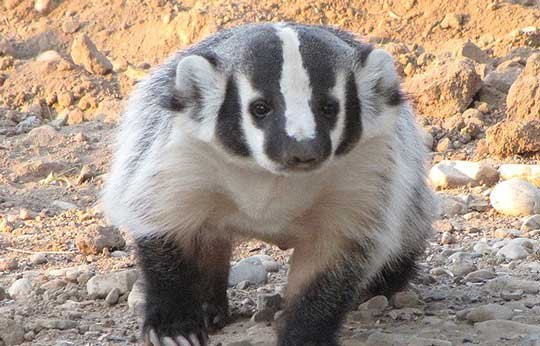
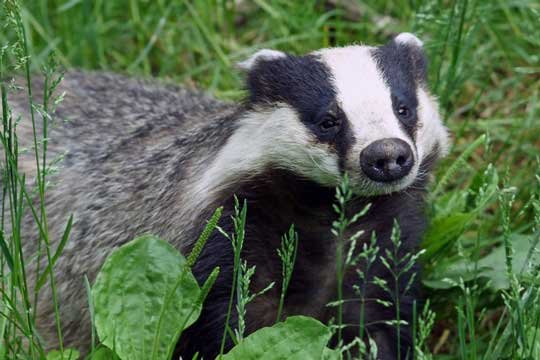
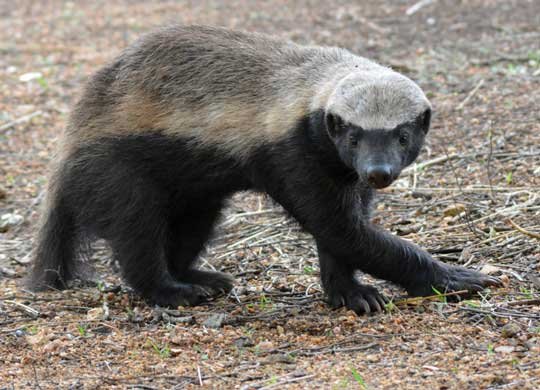
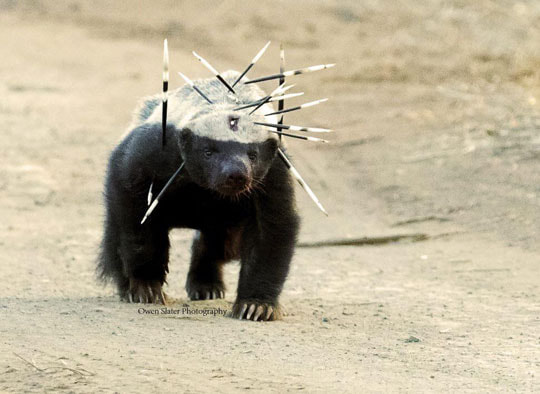
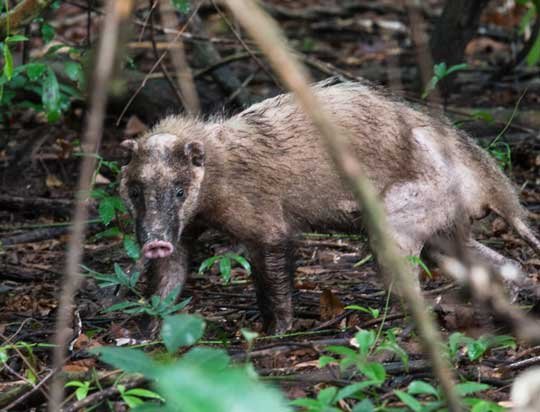

 RSS Feed
RSS Feed